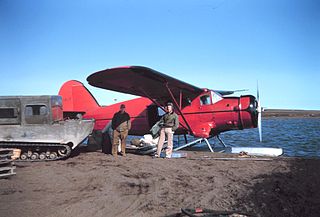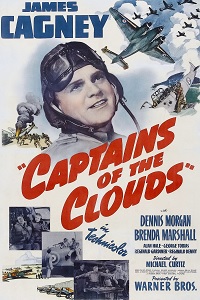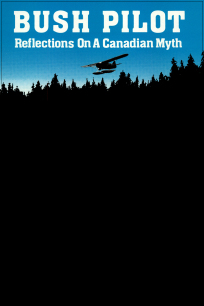
The de Havilland Canada DHC-2 Beaver is a single-engined high-wing propeller-driven short takeoff and landing (STOL) aircraft developed and manufactured by de Havilland Canada. It has been primarily operated as a bush plane and has been used for a wide variety of utility roles, such as cargo and passenger hauling, aerial application, and civil aviation duties.

A bush airplane is a general aviation aircraft used to provide both scheduled and unscheduled passenger and flight services to remote, undeveloped areas, such as the Canadian north or bush, Alaskan tundra, the African bush, or savanna, Amazon rainforest and the Australian Outback. They are used where ground transportation infrastructure is inadequate or does not exist.

Bush flying refers to aircraft operations carried out in the bush. Bush flying involves operations in rough terrain where there are often no prepared landing strips or runways, frequently necessitating that bush planes be equipped with abnormally large tires, floats, skis or any other equipment necessary for unpaved runway operation. It is the only viable way of delivering people and supplies into more difficult to reach, remote locations.

The Noorduyn Norseman, also known as the C-64 Norseman, is a Canadian single-engine bush plane designed to operate from unimproved surfaces. Distinctive stubby landing gear protrusions from the lower fuselage make it easily recognizable.

The Waco Custom Cabins were a series of up-market single-engined four-to-five-seat cabin sesquiplanes of the late 1930s produced by the Waco Aircraft Company of the United States. "Custom Cabin" was Waco's own description of the aircraft which despite minor differences, were all fabric-covered biplanes.

"Home Ain't Where His Heart Is (Anymore)" is a song co-written and recorded by Canadian country music artist Shania Twain. It was released on July 24, 1996 as the seventh single from her second studio album The Woman in Me. It was written by Twain and her then-husband Robert John "Mutt" Lange. It also serves as the opening track to The Woman in Me.

Captains of the Clouds is a 1942 American war film in Technicolor, directed by Michael Curtiz and starring James Cagney. It was produced by William Cagney, with Hal B. Wallis as executive producer. The screenplay was written by Arthur T. Horman, Richard Macaulay, and Norman Reilly Raine, based on a story by Horman and Roland Gillett. The cinematography was by Wilfred M. Cline and Sol Polito and was notable in that it was the first feature-length Hollywood production filmed entirely in Canada.

The Fairchild F-11 Husky was a Canadian bush plane designed and manufactured in the post-Second World War era. Despite a promising design, a lack of a suitable powerplant hurt performance, and stiff competition from the de Havilland Beaver and de Havilland Otter designs meant the type never gained a solid foothold in the marketplace.

Canadian Bushplane Heritage Centre (CBHC), located on the north bank of the St. Marys River in Sault Ste. Marie, Ontario, Canada, is dedicated to preserving the history of bush flying and forest protection in Canada. It was founded in 1987 by a group of local volunteers to preserve the province's history in bush planes and aerial firefighting.

The Waco CG-4 was the most widely used American troop/cargo military glider of World War II. It was designated the CG-4A by the United States Army Air Forces, and given the service name Hadrian by the British.

The Fairchild 82 and the 34-42 Niska were a family of utility aircraft produced in Canada in the mid-1930s, based on designs by Fairchild Aircraft Ltd. (Canada)'s parent company in the United States.

The Alaska Aviation Museum, previously the Alaska Aviation Heritage Museum, is located on Lake Hood Seaplane Base in Anchorage, Alaska. Its mission since 1988, is to preserve, display, and honor Alaska's aviation heritage, by preserving and displaying historic aircraft, artifacts, and memorabilia, and to foster public interest in aviation and its history. The museum has over thirty aircraft on display, a restoration hangar, flight simulators, two theaters, and a Hall of Fame. It provides an emphasis on historic aircraft, aviation artifacts, and memorabilia that contributed to the development and progress of aviation in Alaska, including Bush flying, and the World War II Army base on Adak Island.
Ontario Central Airlines was a Canadian airline headquartered in Kenora, Ontario. It was founded in 1947 and served the Kenora District. It operated a wide range of aircraft, ranging from outdated passenger planes like the Douglas DC-3 to small bush planes like the Noorduyn Norseman.

Desperate Search is a 1952 American adventure film directed by Joseph H. Lewis from a novel by Arthur Mayse. It stars Howard Keel, Jane Greer, Patricia Medina and Keenan Wynn in a drama revolving around two lost children in the Canadian north.

Bush Pilot: Reflections on a Canadian Myth is a 22-minute Canadian documentary film, made in 1980 by the National Film Board of Canada (NFB) and directed by Norma Bailey and Robert Lower. Shot in northern Manitoba, the film explores the myth of the bush pilot as a heroic and iconic figure in the Canada's north.

Northway Aviation Ltd is a Canadian bush airline providing scheduled and charter passenger and freight service from St. Andrews Airport, St Andrews, Manitoba, Canada utilizing both wheel and float equipped aircraft.
Life Times Nine is a Canadian short film, which was released in 1973. Produced by Insight Productions in conjunction with a group of nine students from Toronto, Ontario's SEED Alternative School, the film's concept was for each student to produce and direct their own short film on the concept of life. The filmmakers were Paul Shapiro, Melissa Franklin, Robi Blumenstein, Jordon Hale, Ricky Clark, Celia Merkur, Kimmie Jensen, Andy File and Marilyn Becker.
Leon C. Shelly (1906–1987) was a Canadian producer of industrial and sponsored films, active in Vancouver (1936–1945) and in Toronto (1945–1969).
The 2nd Canadian Film Awards were presented on April 19, 1950 to honour achievements in Canadian film. The ceremony was hosted by Prime Minister Louis St. Laurent.

H. & J. Ryan (est.1855) was a prominent Canadian railway firm founded in Perth, Ontario, by industrialist Hugh Ryan (1832–1899) and his younger brother John Ryan. The firm operated for over forty years and developed large sections of the Intercolonial Railway; the Canadian Pacific Railway; the Brockville and Ottawa Railway; the Red River Valley Railway; the Pembina St. Boniface line; as well as contracts in Michigan, Kentucky, and Illinois.
















